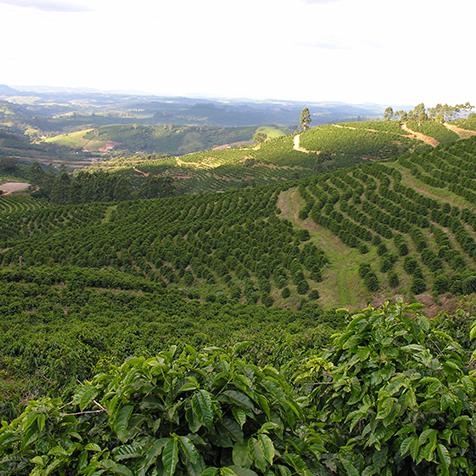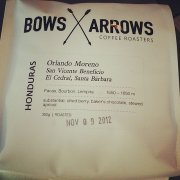Introduction to the planting flavor of Pacamara Saint Emerald Lisa Manor
Pacamara is a variety produced by the mixture of Pacas and Maragogipe, Pacas is a variety of Bourbon, and Magorapagi is a variety of Tibica. In order to obtain the advantages of two excellent variety series, Pacamara is named after the initials of Pacas and Maragogioe. After 30 years of efforts, a new variety of elephant bean was successfully produced in 1980. Pacamara elephant beans are generally rich in flavor, obvious wet aroma intensity, creamy slippery feeling, elegant sour, sweet chocolate, introverted fruit notes.
The Kenyan washing process of St. Philippe Manor is as follows: peel off and dry fermentation for 24 hours, add water to stop fermentation, the above process is repeated twice for 72 hours of fermentation, then soak in water for one night to wash, and then dry in the sun. The Kenyan washing method of St. Philippe Manor is characterized by long throat rhyme and bright acidity.
Reference flavor: caramel, chocolate, body smooth, spice finish, bright and clean
Santa Felisa, a well-known coffee estate in Guatemala, was founded in 1904 and is now taken over by fourth-generation family members Anabella and Antonio. The estate is located in the Argand Nango Valley (Acatenango Valley), the Mayan aboriginal area, and the Mayan aborigines still work in the coffee estate.
From 1560 to 1800 meters above sea level, the microclimate and fertile volcanic soil make the coffee garden contain unique nutrients, and also let the coffee beans mature slowly, perfectly absorbing more natural nutrients brought by the volcanic soil. Saint Lisa Manor implements a friendly ecological farming method, combines agricultural science with ancestral knowledge, and respects local ecology and indigenous peoples.
Eight meticulous treatments combined with a variety of tree species, organic farming to take good care of, adhere to the sweetness of 21 degrees hand-picked coffee cherries, a variety of careful details breed amazing coffee flavor, often among the best in COE. In 2011, the global bidding for independent manors was held, which was the only organic manor bidding event in the coffee industry at that time.
"Saint Lisa does not follow the price fluctuations of the market mechanism, but follows the natural cycle of the laws of nature and aboriginal culture. "Anabella says, and insists on" how to make better and more unique coffee for animals and plants, our families and customers. " "
This idea has existed in the daily work of everyone in the manor like breathing.
"if the quality is good, people play an important role. "this is why Santa Lisa takes care of and respects every coffee worker in the manor like a family, produces high-quality coffee beans and spares no effort to protect the ecology. After the leaf embroidery disease ravaged Central America, we reflected more deeply on the importance and connection between the environment and the land. The estate is committed to:
-afforestation and protect water sources
-to protect the soil, the manor uses compost, does not use herbicides,
-Don't cut down shade trees to enrich the soil and protect biodiversity
-use nutrients that do not damage the soil
Leaf rust in Central America was rampant in 2012, and a whole batch of coffee trees in the surrounding estates died. However, the coffee trees under the organic care of St. Philippa were able to withstand the disease, and the outbreak of leaf rust in 2013 was so severe that they had to be sprayed. Almost none of the Central American organic estates were spared, and St. Philippa's estate had no choice but to lose its organic certification.
St. Philippe's Manor currently does leaf rust control three times a year, uses organic matter twice, and one of them has to use chemicals, except that everything is still the same as the original organic certified manor.
There is no organic certification, but still adhere to the ecological way of growing coffee farmers for a long time.
There is no fair trade certification, but insists on respecting and taking care of all coffee workers and families in the manor.
Be kind to indigenous people for generations.

Important Notice :
前街咖啡 FrontStreet Coffee has moved to new addredd:
FrontStreet Coffee Address: 315,Donghua East Road,GuangZhou
Tel:020 38364473
- Prev

Coffee growing tips: Two fungi that affect coffee harvests
Professional barista communication, please pay attention to coffee workshop (Weixin Official Accounts cafe_style) Coffee drinkers may have heard of bourbon, caturra, typica and other coffee varieties. Today we are talking about Lempira, a little-known breed belonging to Catimor. Lemira is a common breed in western Honduras. It's also Hongdu.
- Next

Coffee Tree species Segmentation Coffee planting Environment requires in-depth understanding of Coffee
One of the characteristics of a coffee tree is that its fruit can bear fruit several times a year, and another is that flowers and fruits (also known as cherries) coexist at different stages of ripening. The style of the whole coffee industry is influenced by the fickle nature. If the fruit is too ripe, the beans in it will rot. If it is not ripe enough, the beans picked will not ripen by themselves. So bean pickers
Related
- Beginners will see the "Coffee pull flower" guide!
- What is the difference between ice blog purified milk and ordinary milk coffee?
- Why is the Philippines the largest producer of crops in Liberia?
- For coffee extraction, should the fine powder be retained?
- How does extracted espresso fill pressed powder? How much strength does it take to press the powder?
- How to make jasmine cold extract coffee? Is the jasmine + latte good?
- Will this little toy really make the coffee taste better? How does Lily Drip affect coffee extraction?
- Will the action of slapping the filter cup also affect coffee extraction?
- What's the difference between powder-to-water ratio and powder-to-liquid ratio?
- What is the Ethiopian local species? What does it have to do with Heirloom native species?

